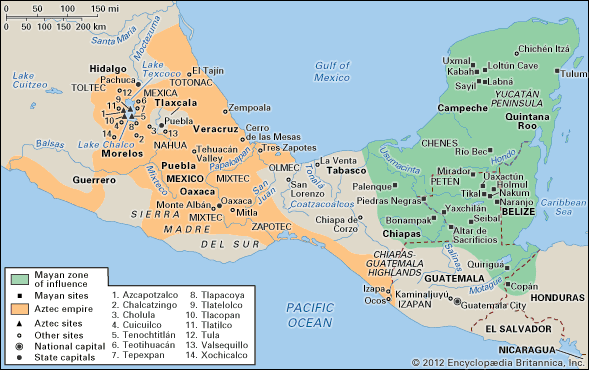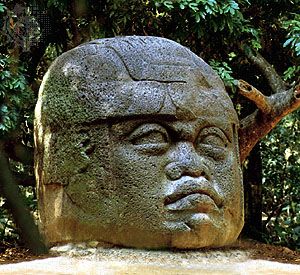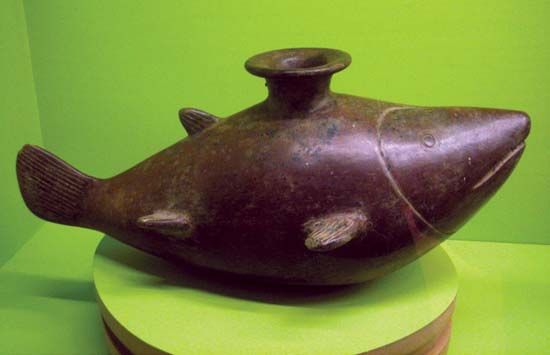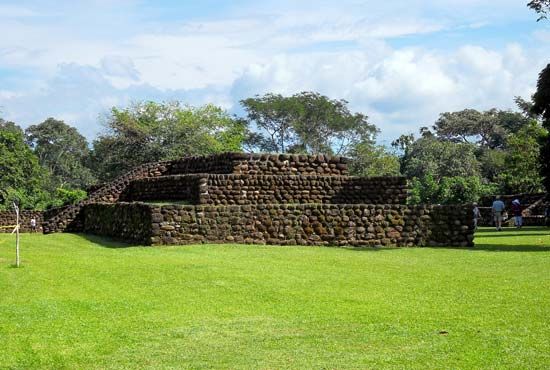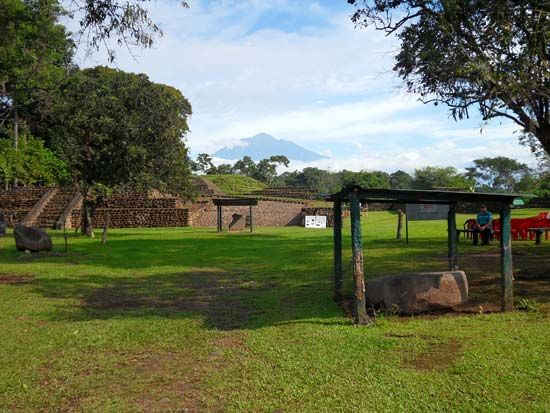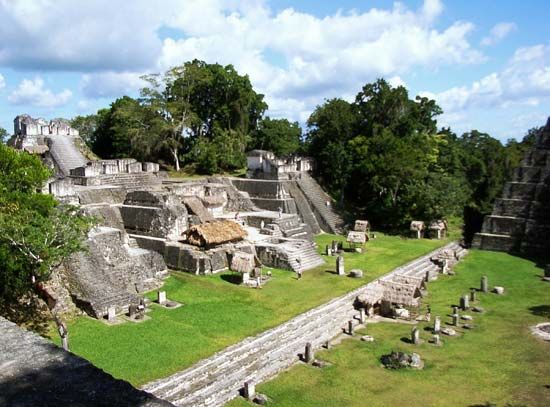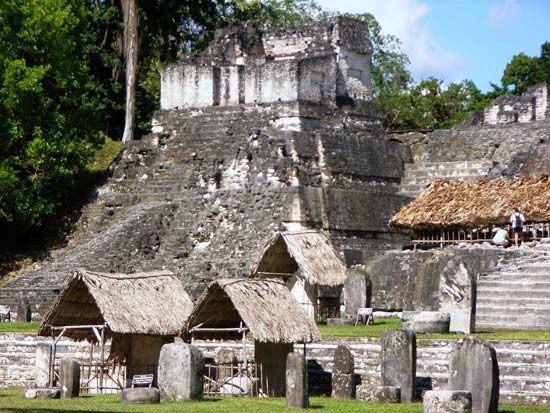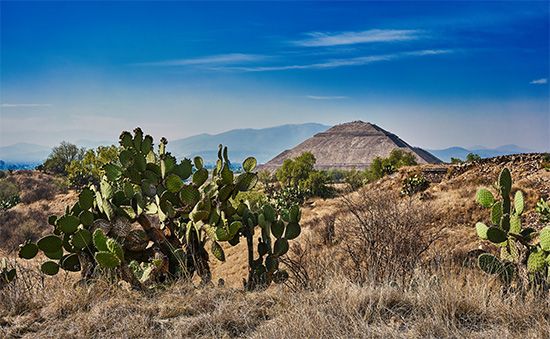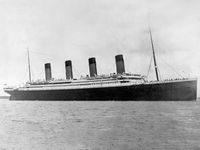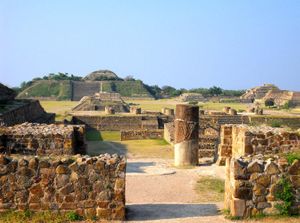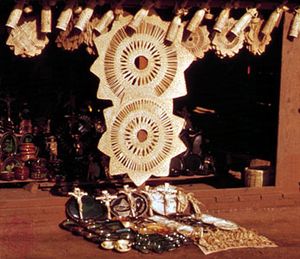The collapse of Classic Maya civilization
In the last century of the Classic period, Maya civilization went into a decline from which it never recovered. Beginning about 790 in the western edge of the Central Subregion, such ceremonial activity as the erection of stelae virtually came to a standstill. During the next 40 years this cultural paralysis spread gradually eastward, by which time the great Classic civilization of the Maya had all but atrophied. A date in the Maya calendar corresponding to 889 is inscribed on the last dated monuments in the Central Subregion; soon after the close of the 9th century it is clear that almost all of this region was abandoned.
For this event, which must have been one of the greatest human tragedies of all time, there are few convincing explanations. It now seems that the Classic Maya civilization in the region of its greatest development went out “not with a bang but a whimper.” Massive foreign invasions can be discounted as a factor, but non-Maya elements did appear in the west at the same time as ceremonial activity terminated. These became the inheritors of whatever was left of the old civilization of the Central Subregion after 900 ce, having established trading colonies and even a few minor ceremonial centres on its peripheries.
Whatever incursions did take place from the west were piecemeal and probably the result of the general decline, rather than its cause. Similarly, there is little reason to believe that there were peasant revolts on a general scale. The only real fact is that most of the inhabitants of the Central Subregion went elsewhere. Probably some were absorbed by such still flourishing ceremonial centres of the Northern Subregion as Uxmal and Kabah, while others might have migrated up into the congenial highlands of Chiapas and Guatemala. Although a population explosion and severe ecological abuse of the land must have played their role in the tragedy, the full story of the decline and fall of this brilliant aboriginal civilization remains to be told.
Michael Douglas Coe Gordon R. WilleyThe Editors of Encyclopaedia BritannicaPostclassic period (900–1519)
Definition of the Postclassic
The final period of pre-Columbian Meso-American history is referred to as the Postclassic. Its beginning is usually placed at 900, and it terminates with the arrival of the Spanish conquistador Hernán Cortés in 1519 or with his conquest of the Aztec in 1521. The 900 date is based on two considerations: first, the 10th century was the period of the catastrophic collapse of the lowland Maya civilization and the cessation of the custom of erecting monuments dated by the Long Count; second, 900 was also the approximate date of the founding of the city of Tula in central Mexico and the rise of a people called the Toltec, who, according to the historical annals, built the first great empire in Meso-America. At one time it was thought that the date marked the collapse of all of the regional Classic civilizations of the area as the result of massive population dislocation. But it now appears that some Classic civilizations declined as early as 750, whereas others persisted until as late as 1200. The period is usually divided into two phases: Early Postclassic (900–1200) and Late Postclassic (1200–1519), the former equivalent with the period of the Toltec, the latter with that of the Aztec. The Postclassic civilizations of Meso-America came to an abrupt end with the coming of the Spanish in the early 16th century. For an account of the Spanish conquest, see Latin America, history of: The colonial period.
The Postclassic Period as a whole has also been distinguished from the Classic on the basis of assumed major changes in Meso-American political, economic, and social institutions. It has been asserted, for example, that the Classic period was one of relatively peaceful contact between polities, of the absence of large imperialistic states and empires (and of the militaristic élan and organization that accompanies such states). The Classic has been further characterized by the absence of true cities, by theocratic rather than secular government, and by an overall superiority of arts and crafts, with the exception of metallurgy, which appears for the first time in the Postclassic Period. In contrast, the Postclassic was characterized as a period of intense warfare and highly organized military organization, of empires and cities, of secular government, and of overall artistic decline.
Subsequent research, however, has cast considerable doubt on these conclusions. Many of the contrasts were drawn from events in the lowland Maya area and applied to the entire culture area; others were concluded essentially by a comparison of the Classic Maya of the lowland tropical forest of northern Guatemala and the Yucatán Peninsula with the Postclassic Aztec living in central Mexico in a dry mountain basin 7,000 feet above sea level. The differences, in part, are the product of separate culture evolution, conditioned by ecological factors. Cities and large states comparable to those built by the Toltec and Aztec were present in Early Classic times at Teotihuacán in central Mexico and probably at Monte Albán in Oaxaca. Militarism was at least significant enough to be a major artistic theme throughout the Classic period, even among the lowland Maya. One could also question the criterion of artistic decline, since a number of Postclassic crafts were highly developed, such as Aztec sculpture, Mixtec ceramics and metallurgy, and Zapotec architecture.
The separation between Postclassic and Classic is therefore little more than a convenient way of splitting up the long chronicle of Meso-American cultural development into manageable units for discussion and analysis. The Postclassic is a period also in which historical traditions combine with archaeological data, whereas the Classic either lacks a written history or, in the case of the lowland Maya, provides little more than cryptic biographies of kings. Perhaps this is the best rationale for definition of the period.
Society, culture, and technology
At the time of the Spanish conquest, Meso-America was occupied by a number of peoples speaking languages as distinct from each other as English is from Chinese. On the central Gulf coast and adjacent escarpment were the Totonac; in Oaxaca and adjacent portions of Puebla and Guerrero two major ethnic groups, the Mixtec and the Zapotec, shared the western and eastern portions of the area, respectively; and in Michoacán lived the Tarascan. Various peoples of the Maya linguistic family occupied most of Guatemala, the Yucatán Peninsula, eastern Tabasco, and highland Chiapas; a detached group, the Huastec (Huaxtec), occupied the north Gulf coast. An equally widespread family, the Nahua (to which the Aztec belonged) occupied most of the Central Plateau, a huge area in the northwest frontier, portions of Guerrero, the Pacific coast of Chiapas and Guatemala (where they were known as the Pipil), and the Gulf coast. Some detached groups had spread beyond the frontier of Meso-America into Nicaragua and Panama. The linguistic family to which the Nahua belong (the Uto-Aztecan) is the only Meso-American family with affinities to languages north of the Rio Grande, including those of such western U.S. Indians as the Hopi, Paiute, and Shoshone.
One of the Nahua-speaking nations, the Mexica, or Tenochca (or the Aztec, as they are commonly called), were the dominant people in Meso-America in 1519, having created by conquest an empire estimated as covering some 80,000 square miles (207,000 square kilometres) and having a population of 5,000,000 to 6,000,000 people.
All of these diverse ethnic groups shared a common cultural tradition, but separate historical origins and environmental factors had also produced a substantial degree of regional differentiation. Most of the cultural characteristics of the area go back at least to the beginning of the Postclassic, and many appeared in Classic times. The various regional cultures and languages have great time depths and undoubtedly were present during the Classic period. Common institutional characteristics included organization into centralized polities, including populations minimally in the tens of thousands, with a formal government, supported by a highly organized taxation system; stratification into social classes (including slave and serf classes); occupational specialization—in some areas full time with a guildlike organization; highly organized local and interregional trade involving professional merchants and regularly meeting markets; and a professional priesthood.
The technological base of this elaborate institutional structure seems weak by western European standards, since the primary technology (i.e., the tools used to manufacture other technology) was based on chipped and ground stone, metal being reserved primarily for ornaments. Since draft animals were absent, all power was based on human energy. The economic base of the civilization was a highly productive agriculture, but the basic tools were primitive—stone axes for clearing vegetation and a number of wooden digging tools for working the soil. The crop complex was rich, with corn (maize) serving as the staple food and beans an important source of protein. But the list of secondary crops was large: chili peppers, tomatoes, squashes, sweet potatoes, cassava (manioc), cotton, tobacco, cacao, pineapples, papayas, maguey, nopals (prickly pears), sapotes (zapotes), peanuts (groundnuts), avocados, amates (paper figs), and many others.
Many crops were limited to particular environmental zones, thus acting as a major stimulus to trade. In many areas, particularly the tropical lowlands, the slash-and-burn, or swidden, system of farming was employed: forests were cleared, planted for up to three years, and rested for longer periods to restore fertility and eliminate the more difficult weeds. This regular rotation of fields resulted in high production per capita but had low demographic potential because in any given year most of the land lay fallow. In some lowland areas permanent grain and orchard cropping were practiced. In the drier highlands a number of specialized techniques were used, and agriculture generally was more intensive. Particularly important were terracing, irrigation, and swamp reclamation. The per capita productivity of highland agriculture was probably less (because of the higher labour input), but the demographic capacity was considerably greater than that in the lowlands. As a result of these highly effective approaches to farming, the population was dense when compared to western Europe in the 16th century. Population estimates for the conquest period have varied from 3,000,000 to 30,000,000; a reasonable estimate is between 12,000,000 and 15,000,000.
The diet of the average Meso-American was relatively uniform throughout the area. Dried corn was boiled in lime-impregnated water to soften the hull, ground into a dough on milling stones (manos and metates), and then either made into tortillas or mixed with water and drunk as a gruel called posol. The tortillas were eaten with sauces prepared from chili peppers and tomatoes, along with boiled beans. This was essentially the diet of the peasant, with the addition of pulque, the fermented sap of the maguey, at higher altitudes. To this were added the other crops in minor quantities and combinations depending on the specific local environment. Luxury foods included cocoa drinks, meats (from game or from the only two domestic animals of significance, the hairless dog and the turkey), and fish. The diet of the peasant, as is the case even today, was low in animal protein; but apparently the quantity of vegetable protein ingested made up for this deficiency.
Major Postclassic Meso-American crafts were weaving of cotton and maguey fibre; ceramics for pottery vessels, figurines, and musical instruments; stone sculpture; featherwork used for personal and architectural ornament; lapidary work (jadeite, jade, serpentine, and turquoise); metalwork (using gold, copper, and, more rarely, silver) for ornaments and a few tools; woodworking, the products including large dugout canoes, sculpture, magnificently made drums, stools, and a great variety of household items; baskets for containers and mats; painting; and, most particularly, stone and lime concrete masonry architecture.

